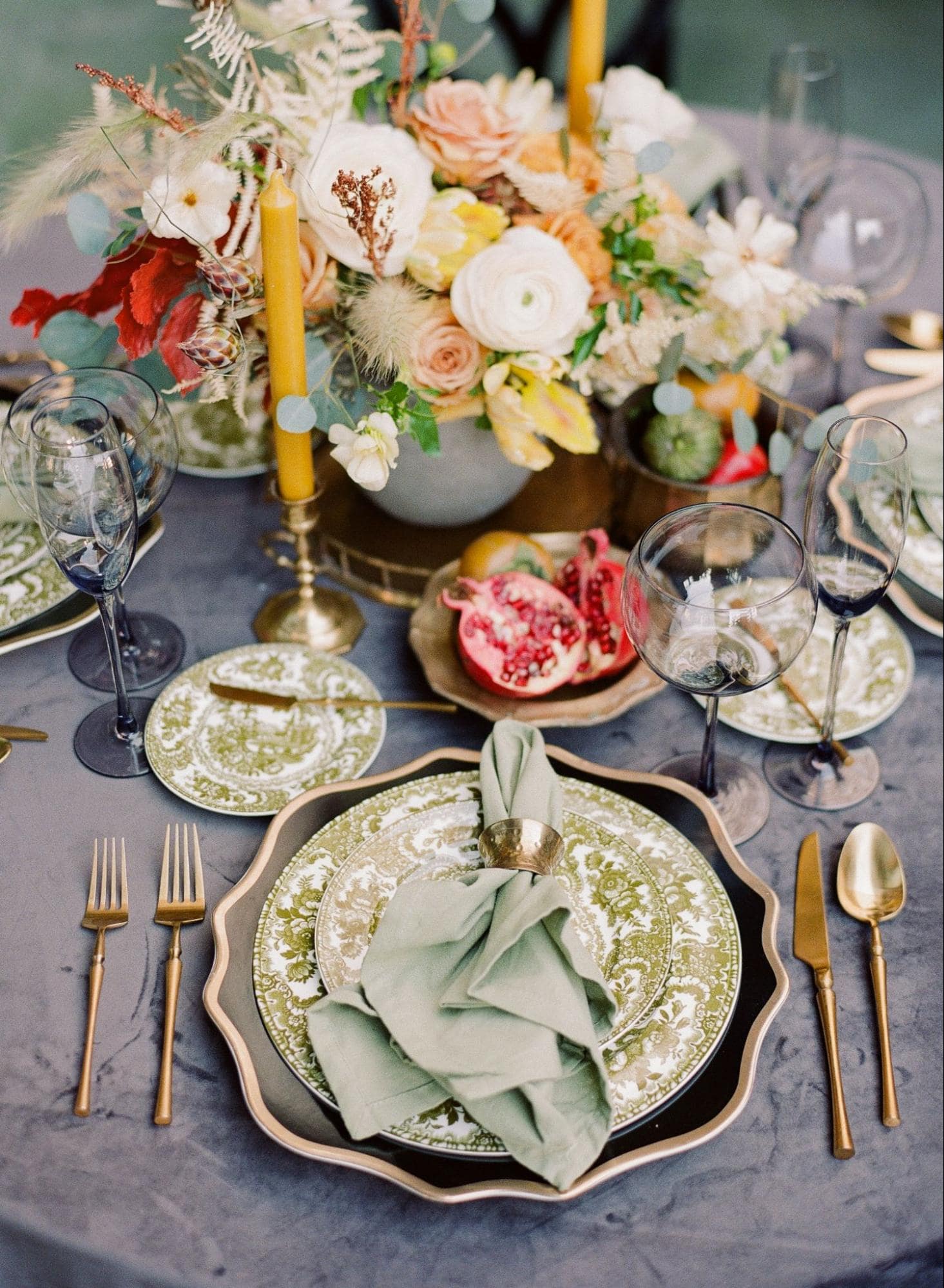What Are Charger Plates
Charger plates have names like underplate, service plate, or chop plates. Charger plates are large plates placed under the table setting to enhance the decor of the table setting. Charger plates add elegance to a meal when there are several courses served.
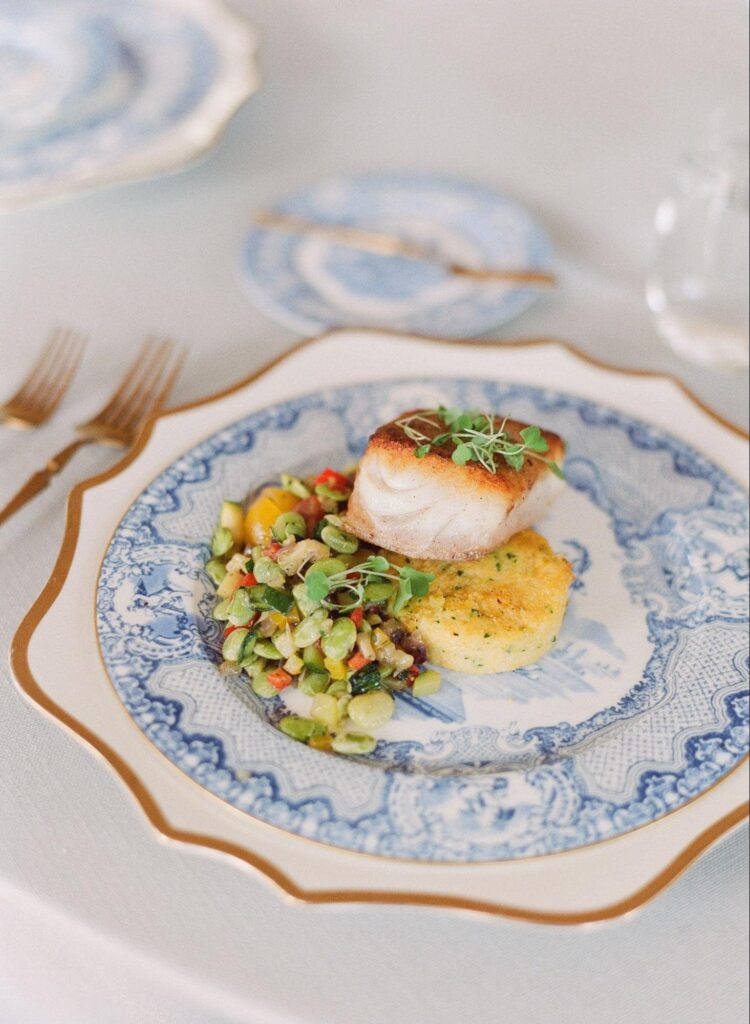
Types Of Charger Plates
Charger plates come in several different materials:
- Glass
- Porcelain
- Imitation Wood
- Acrylic
- Rattan
- Stainless Steel
The type of charger plate used at an event depends on the aesthetic of the event. Remember that because one should not serve food on charger plates.
When To Use Wood Charger Plates
Wood charger plates work well when the aesthetic needs a more natural, organic feeling element or for an elegant outdoor event.
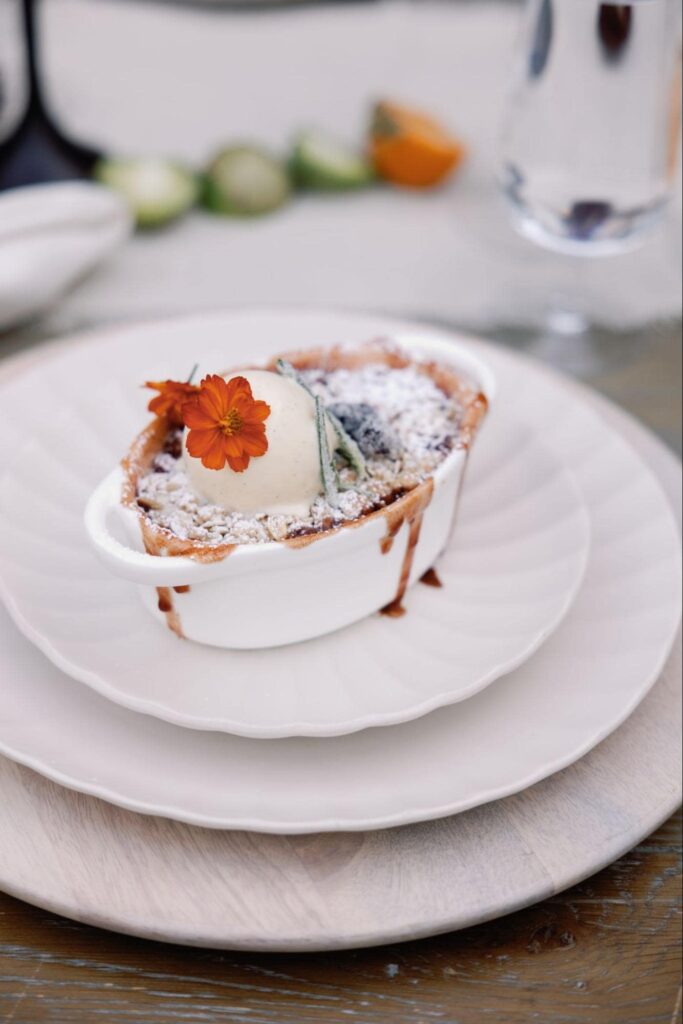
When to Use Acrylic Charger Plates
Acrylic charger plates have many colors and designs, making them an excellent choice for multiple events. Acrylic charger plates are also more durable than plastic or glass charger plates. You can find acrylic charger plates in virtually any color or style, which is why many event planners and designers use acrylic charger plates.

When To Use Glass Charger Plates
Glass charger plates are elegant and add that extra touch of class to any place setting. The drawback to glass charger plates is that they are fragile. If glass charger plates are not treated with care, they will damage and break. Glass charger plates are often used for more high-class events like galas and charity fundraisers.
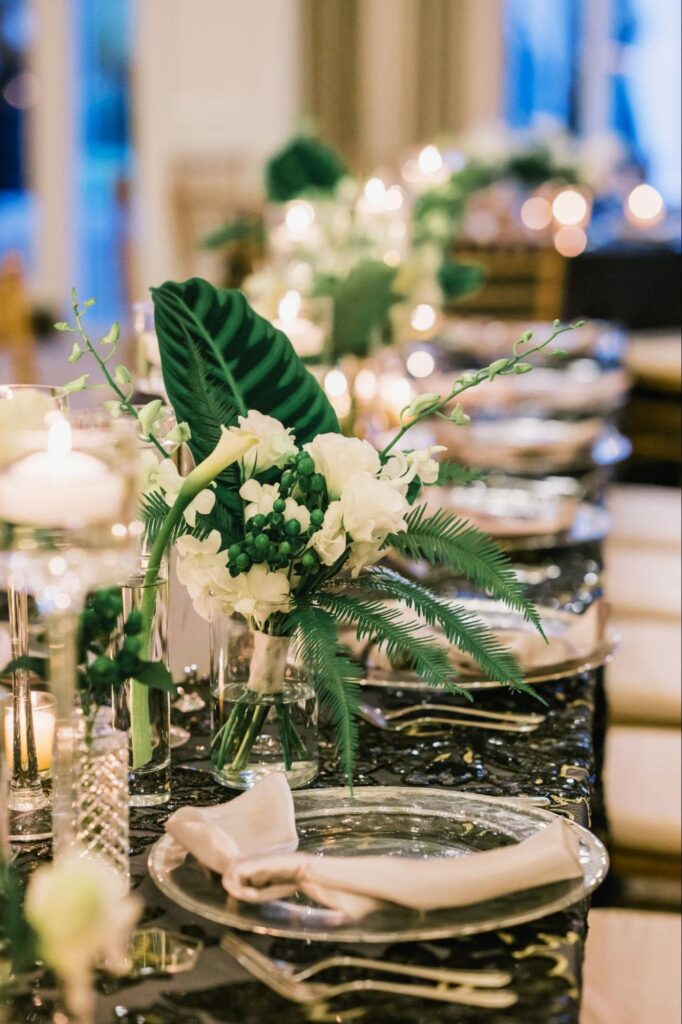
When to Use Rattan Charger Plates
Ratan charger plates are generally used for a more organic or natural aesthetic. Rattan charger plates only aid the decor of the place setting. Ratan charger plates do not always protect the tablecloth or prevent spills. Rattan charger plates are more challenging to clean than other charger plates but are less expensive.
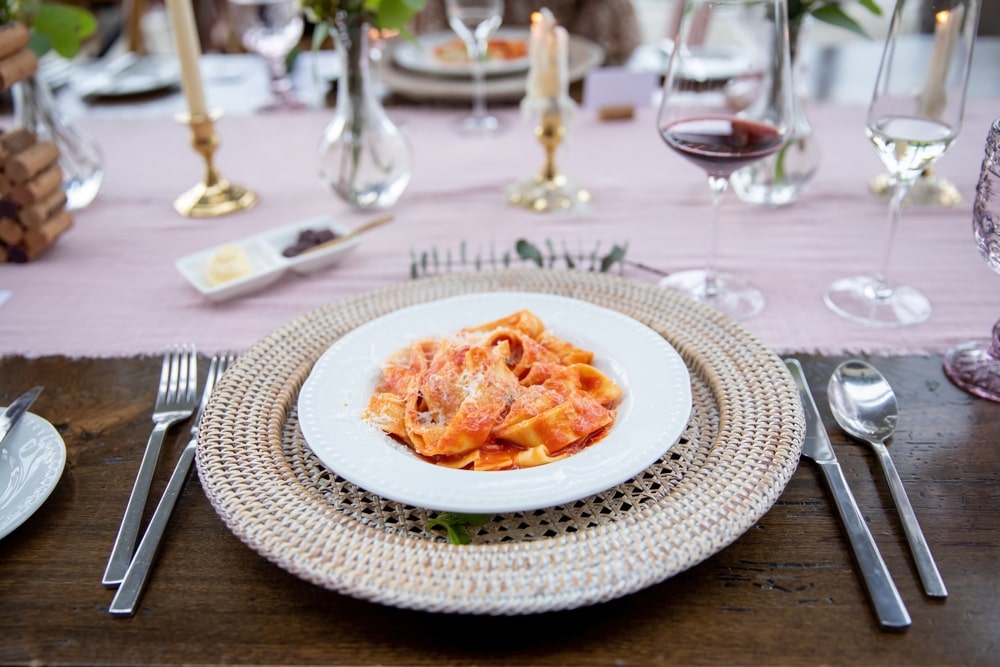
When To Use Stainless Steel Charger Plates
Like acrylic charger plates, stainless steel charger plates come in many colors. Stainless steel charger plates are more durable than acrylic ones but are only sometimes as versatile. Stainless steel charger plates can also be more expensive than their acrylic counterparts.

Do Charger Plates Replace Placemats
When using a charger, plate placemats are unnecessary. Charger plates add to the decor’s elegance and protect the tablecloth from being messed on or damaged. Even though placemats are unnecessary when using charger plates, one can still use placemats in conjunction with the charger plates if one chooses.
Where Did Charger Plates Originate
Charger plates have been used since at least the 19th century to enhance table settings. We see a reference to a charger in Biblical times, which makes one believe they may have been around longer than we have on record.
Charger Plate Standard Practice
In Europe, there is a different practice for using charger plates compared to the rest of the world. In Europe, charger plates are used as a base to place certain dishes on. Charger plates are mainly referred to as “service plates” in Europe and do not stay on the table when the main courses are served.
In Europe, the only time there is no underplate on the table, whether a charge plate or a warm underplate, is during dessert. After the starter and entree are served, the charger plates are removed and replaced with warm plates for the main dishes.
Later when the main course is finished, the warm plate is removed and not returned before the dessert is served.
Europe is the only country we are aware of that has this practice. Generally, charger plates are left untouched throughout the entire dinner or meal service.
What Are Charger Plates Used For At Events
Charger plates are mainly used to raise the standard of excellence of a dinner table setting. Their secondary process is to protect the tablecloth from spills and damage. Another purpose of charger plates is to protect your patrons from burning themselves on hot plates like the dishes that soup comes in.
Why You Should Use Charger Plates At Your Event
For an event to be classified as an elegant affair, it is essential to have a charger plate as part of the table setting. Charger plates take your decor to the next level by combining all the elements.
A charger plate helps give a place setting the finished look. If you’re at an elegant event and look at the table setting, you will notice that there is always a charger plate. A dinner setting looks complete with it.
How To Use A Charger Plate
A charger plate is placed on the tablecloth at each setting. The relevant plates and bowls are stacked on top of the charger plate. The cutlery is then placed on the outside of the charger plate. The napkin or serviette is often placed on top of the charger plate.
In most cultures, the charger plate will remain on the table in this position until the end of the dinner, unlike in Europe, where it is removed before the main dishes are served. If a placemat is present, the charger plate will be placed on top of the tablecloth, although in most cases, placemats are unnecessary if there is a charger plate.
Difference Between A Charger Plate And A Dinner Plate
Charger plates are generally larger than your typical dinner plate yet smaller than a serving platter. Depending on the material they were made from, charging plates are usually thinner than dinner plates and serving trays or platters.
Where Did Charger Plates Get Their Name
The charger plate is derived from an old English word, “charger.” This word was found in ancient Scottish and English texts, and it was used to describe how heavy objects were carried.
It came into play with charger plates when they placed a single plate or platter in the middle of the dining table in ancient times. Their dinner was placed on this plate, platter, or charger. Everyone around the table would grab their meal off the charger in the middle of the table, as that was standard practice.
As dinners became more elegant and sophisticated, the “charger” evolved into the charger plate that brings beauty to a dinner table.
Dinner Plates
Dinner plates come in many shapes: round, square, rectangular, and even triangular. A large dinner plate generally has a diameter between nine and thirteen inches. Dinner plates come in multiple colors; some are made from different materials.
One mainly finds dinner plates made from porcelain but also made from wood, bamboo, plastic, and possibly even less common materials. No matter the material, the critical factor is that the dinner plates are made from waterproof material.
Dinner Plate Origin
The dinner plate usually has a broad, flat surface, traditionally in a circle. Dinner plates have been seen in some form or another throughout history for thousands of years. The sizes of the containers increased when food became more readily available.
There was a period in Europe when plates were no longer used, and they used what was called “trencher plates.” Trencher plates were either made out of wood or bread.
The dinner plate as we know it today gained popularity in France in 1536, when Frances I of France was in power over the courts of France.
Disposable plates are a far more recent invention. Disposable plates were first seen in 1904. Disposable plates are made of either paper or plastic and are only designed to be used once before they are disposed of, as their name indicates.
Collectible Plates
Many people have adopted the culture of collecting plates. Most collectible plates have a picture or pattern that is either rare, one of a kind or has sentimental meaning. Some people collect leaves with the faces of famous people on them, like Elvis or members of the Beatles. Others collect plates with specific patterns from places like China.
Still, more people collect plates when traveling, as other people do with spoons. It is possible to find dishes with the names of different states, towns, or countries on them, and some people collect these as souvenirs.

